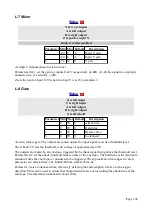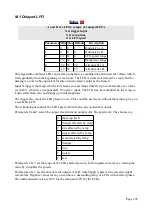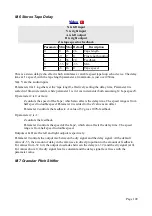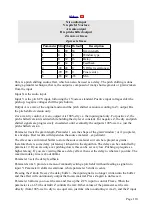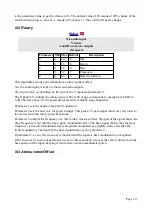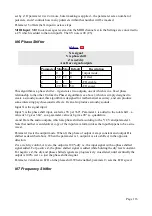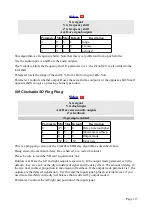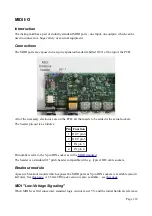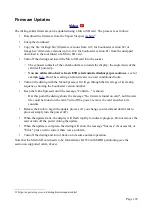
X is V/Oct pitch input (fundamental)
Y is V/Oct pitch input (formant)
Z is tune or masking
A & B are pulsar outputs
Receives MIDI
Parameter Min Max Default
Description
0
0
99
0
Chooses the wavetable.
1
0
99
0
Chooses the wave.
2
0
3
0
Window.
3
0
1
0
Y Mode.
4
0
99
0
Masking.
5
-16 8
0
Octave.
This algorithm is an implementation of pulsar synthesis, inspired by the description in Curtis
Roads's book Microsound (MIT Press)
pp137-157.
In pulsar synthesis, a small grain of sound (known as a
pulsaret
, typically a pulse or single cycle
waveform) is repeated periodically, followed by a small section of silence. The length of the sound
within the repeating period (equivalently, the speed at which it is played) offers a means of control
the timbre without affecting the perceived pitch of the sound. By the same token, changing the
fundamental pitch without changing the speed at which the grain of sound is played offers pitch
change without simply shifting the entire spectrum up and down, an effect reminiscent of 'vocal' or
'formant' synthesis.
This algorithm uses wavetables from the SD card as the source of the pulsarets. See 'Loading
wavetables' above for a description of how to load wavetables onto the SD card.
Input X sets the fundamental frequency – the rate at which the pulsaret train is generated.
Input Y sets the 'formant' frequency – the rate at which the pulsaret is played. By default this is
independent of the fundamental frequency. If parameter 3 is set to 1, the X input is added to the Y
input, so changing the fundamental frequency also changes the formant frequency.
Parameters 0 & 1 choose the wavetable and the wave within the table, respectively.
Parameter 2 chooses the window or envelope to apply to the pulsaret. The options are:
Parameter 2 value Window shape
0
Rectangular
1
Linear attack
2
Linear decay
3
Gaussian
The Z knob/CV depends on parameter 4. When parameter 4 is zero (the default), Z is a tuning
control, with a range of approximately ±0.5 octaves. Otherwise, masking is applied – that is,
pulsarets are omitted from the train. In this case, outputs A & B use inverse masks – output B will
output a pulsaret when output A is suppressed, and
vice versa
. If parameter 4 is 1, stochastic
masking is applied i.e. pulsarets are randomly masked. The likelihood of a pulsaret being masked is
22 Some of the text of this book is available on
but I would urge you to pick up a physical copy.
Page 115




